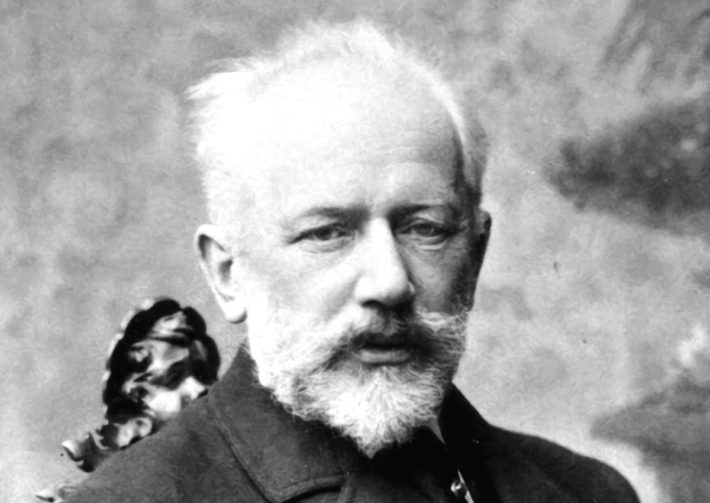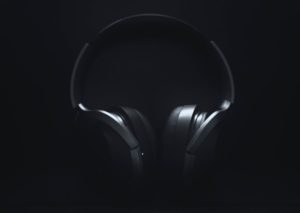Pyotr Ilyich Tchaikovsky (1840-1893) was, in the late 19th century, the most celebrated Russian composer outside of Russia. Contrary to other composers from his home country which did not possess any formal musical education, Tchaikovsky was one of the first few students in the great Saint Petersburg Conservatory, and was educated in the great tradition of western classical music. He is best known for his big Concertos and orchestral pieces – namely the late Symphonies and ballet music. But Tchaikovsky was well versed in practically all genres of classical music, from opera, chamber music, and solo piano music. Here are 10 highlights from Tchaikovsky’s composition career that a beginner listener should know. As on other articles from our “Beginners Guide” series, the album recommendation for each piece are also chosen as a good starting point and a way to be introduced to the music, and not necessarily as the best recording.
Piano Concerto No. 1
Tchaikovsky’s Piano Concerto No. 1 in B Flat Minor is one of the best-known Piano Concertos in classical music. Like many of Tchaikovsky’s early works, the Concerto was not well received in its first public performances, with especially harsh criticism by the intended soloist, pianist Nikolai Rubinstein. Yet slowly but surely, the Concerto gained reputation and were added to the standard repertoire of Piano Concertos. It was performed and recorded so many times in the past 150 or so, that listeners forget how original and unusual a Piano Concerto this is. The first and main theme of the work, which so many people can whistle without even know where it came from, never reappear after the first three minutes of the piece, making this an unusual way of composing a concerto in the classical sense. The technical demands from he soloist in this entire Concerto are significant, and it was indeed considered one of the most difficult ever written, until more ambitious Piano Concertos by Rachmaninov, Prokofiev, and Bartók came along.
Where the first movement is celebratory with a touch of sadness in the quiet themes, the second movement is reflective and mostly serene, with lovely piano, strings, and woodwind writing. It is interrupted by a quick and restless segment, only to go back to the calmness of the initial theme. This ABA compositional technique of the middle movement was later adopted in Rachmaninov’s and others, but is not without precedent – Tchaikovsky was in awe of Mozart’s compositions and the slow movement of Mozart’s Piano Concerto No. 20 (K.466) also includes a stormy middle segment in the slow movement. The final movement is quick and folky, ending the Concerto with a splash of great virtuosity and a triumphant repeat of the second theme of the finale (a technique Rachmaninov later adopted in his Piano Concertos).
Martha Argerich recorded the Tchaikovsky First Piano Concerto many times, but this live recording with Claudio Abbado and the Berlin Philharmonic Orchestra is her best. She is also served by a superb recording quality. Another recording not to be missed is by Vladimir Horowitz with his father-in-law, Arturo Toscanini. This legendary performance still sounds fresh and exciting even 75 years after it was recorded. Some accommodations need to be made for the mono sound quality.
Violin Concerto
Like Beethoven and Brahms, Tchaikovsky wrote only one Violin Concerto, but it is one of the best works in the genre from the late 19th century. Similarly to the First Piano Concerto, there is a long and substantial first movement, followed by a sentimental slow movement and a folk-Russian-influenced finale. An early version of the slow movement was dropped out and was chosen instead as the opening movement to “Souvenir d’un lieu cher” for violin and piano. At first, some violinists, which the composer counted upon to give advice and perform the Concerto, avoided the piece, and it took few revisions by the composer, performers, and editors to establish the Concerto as we know it today. During the 1890 and the beginning of the 20th century, it quickly became one of the most loved and often-performed Violin Concertos in concerts and recordings.
Practically every known (and less known) violinist recorded the Tchaikovsky Violin Concerto, some of them several times. From the modern, digital versions, the all-Russian team of Vadim Repin, the Kirov Orchestra, St. Petersburg and Valery Gergiev can be recommended without reservation, for beginner and experienced listeners alike. The combination of Repin’s refined playing, warm yet controlled, with Gergiev’s superb accompaniment, makes this an almost ideal version, with a close yet balanced recording. The Tchaikovsky Violin Concerto is a good litmus test for violinists, and from the legendary version available, to name just a few, it is recommended to listen to Heifetz, Stern, Milstein, Haendel, and Perlman.
Rococo Variations
Tchaikovsky never wrote a Cello Concerto, and seldom a piece in a theme and variations form. And so his “Rococo Variations” for cello and orchestra is a rare instance indeed. The theme, coming after a mysterious introduction from the orchestra, is an original theme, the composer trying to imitate a “charming” character he found in pieces from the 18th century. The theme then goes through 7 or 8 variations in changing characters, ending with a brilliant coda. The orchestration is less thick and dramatic than Tchaikovsky usually chooses when writing for a full orchestra, opting instead for a “classical” ensemble of strings, woodwinds, and horns, without brass nor percussion.
The piece is most often performed in its heavily revised version by the work’s dedicatee, cellist Wilhelm Fitzenhagen. Like in the case of the intended performers of the Violin Concerto, Fitzenhagen thought the Rococo Variations needed adjustments to the cello writing, together with structural changes – this included omission of one of the variations. His corrections found their way into many additions, and caused significant debates among musicians and Tchaikovsky scholars. Some cellists have recorded a reconstructed version of the original manuscript, and the comparison is surely interesting for anyone that cherishes the piece.
The version by Mstislav Rostropovich, together with the Berliner Philharmoniker and Herbert Von Karajan has enjoyed legendary status since it was released, in a superb analog recording by Deutsche Grammophon. Using the revised Fitzenhagen version, it is now coupled with a superb account of Dvorak’s Cello Concerto.
Symphony No. 6
Tchaikovsky composed 7 Symphonies overall – the six “numbered Symphonies” and the so-called “Manfred Symphony” (another Symphony, based on abandoned material, has been completed posthumously). From this group, the last three Symphony (4-6) are mature, superb works that any classical music lover will enjoy. It’s no doubt, however, that the Sixth Symphony (Op.74), also known as “Pathetic”, is the most impressive and well-known, earning a prominent place in all of the Symphonic literature. Unlike his Never-ending dissatisfaction with his own compositions, Tchaikovsky was extremely pleased with this Symphony, but unfortunately couldn’t enjoy its success – having conducted the premier only 9 days before his death. In this Symphony, Tchaikovsky reached the best balance between the classical structure and his own atmospheric and spontaneous-sounding elements. The opening movement is reflective and builds tension for the rest of the Symphony, yet repeated hearing will show that these apparently spontaneous moments appear in other variations throughout the piece, giving it a sense of a complete whole.
Mihail Pletnev and his Russian National Orchestra recorded the complete Symphonies and major overtures for Deutsche Grammophon, and the complete box offers superb performances and fantastic recording quality, with the 6th Symphony being the highlight of the set. This being a 7 CDs set at the price of 2, it is an attractive bargain indeed.
Ballets
Tchaikovsky’s wrote 3 pieces of “incidental music” for ballets, two of which – The Nutcracker” and “Swan-Lake” – are among his best-known works, and remain core repertoire for any classic ballet company. Because of the popularity of these works, Tchaikovsky later produced 3 shorter “Suites”, 20 minutes each, with the best movements from the ballets. The Suites are a good introduction for a beginner listener. Those who want every note written for each ballet can then purchase the full incidental music.
Since its appearance in the late 1970s, Mstislav Rostropovich’s account of the 3 Ballet Suites with the Berlin Philharmonic has never left the catalog. The BPO was always a great Tchaikovsky Orchestra, and its player fully attuned to the music’s dramatic effects.
Overtures
Next to the three last Symphonies and the ballet suites, Tchaikovsky composed lovely pieces for orchestra, the famous of which are Francesca Da Rimini, Romeo and Juliet, Capriccio Italien, The Tempest and the most well known – The 1812 Overture. The overtures and shorter orchestral works are often added to albums of Tchaikovsky’s Symphonies or Concertos.
Serenade For Strings
This unusual composition contains some of Tchaikovsky’s more heart-warming melodies and is written with ingenious diversity and contrapuntal techniques. Tchaikovsky specifically asked for a large strings orchestra, perhaps to prevent ensembles from performing the piece in chamber settings. Although not symphonic in size, Naville Marinner presents a passionate performance with the strings of the Academy of St Martin in the Fields. The album includes a lovely performance Dvorak’s own Serenade For Strings, and Grieg’s Holberg Suite.
Piano Trio
Written between 1881-1882, the Piano Trio Op. 50 is unique in many ways. It is the only work for violin, cello, and piano Tchaikovsky has written, and has only 2 long movements, with the second being in theme and variations form, much like Beethoven’s last Piano Sonata, Op. 111. The piano part is extremely difficult from a technical standpoint, and in the variations movement, the three musicians need to adapt to the music’s constant change in mood and character. The final variation is attached to a coda, making it a kind of a Finale, quoting again the first theme of the first movement.
Lang Lang (piano), Vadim Repin (violin) and Mischa Maisky (cello) display a sweeping performance of the Piano Trio, in a version that combines spontaneity with detailed observation of the score, matched by a superb recording quality. The album also includes a lovely performance of the early Trio Élégiaque No. 1 by Rachmaninov.
The Season
Tchaikovsky wrote many pieces for solo piano, though they are still standing in the shadow compared to his orchestral works. Many pieces are worth hearing, and from the many treasures in this repertoire, one of the more interesting (and original) is “The Seasons”, a cycle of 12 short pieces, each depicts a month of the year. The two best-known movements are the “Barcarole” (June) and “Autumn Song” (October).
Vladimir Ashkenazy presents The Season as a simple, almost naive, musical representations of each month. The Decca engineers has caught his staple bright sound, and the overall results are a great way to get to know this cycle.
Eugene Onegin
For any new listener who wishes to experience Tchaikovsky’s contribution to the field of opera, his most successful is “Eugene Onegin” (“Евгений Онегин”). Based on the famous novel in verse by Alexander Pushkin, it is one of the few Russian-speaking operas that remained in the regular repertoire and is regularly performed. The famous moments from the opera include the orchestral Overture to act 1, the Waltz and the Polonaise from act 2, the “letter scene” for soprano (act 1), and “ Lensky’s Aria” from act 2.
Georg Solti’s version of Eugene Onegin is a safe bet when coming to the opera for the first time. With top-notch soloists and wonderful orchestral accompaniment, this can be recommended without hesitation.

Albums Included with an Apple Music subscription:
This concludes our beginners guide to Haydn. Visit our Beginners Guides to classical music page and get to know more classical music composers. Sign up to our newsletter to get updated on new guides when they are published.
Follow Us and Comment:
Get our periodic classical music newsletter with our recent reviews, news and beginners guides.
We respect your privacy.









